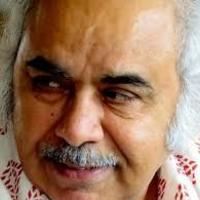- My two books published on Karnataka's Rich Heritage are titled Artedit
Published by Notion Press, Chennai The above book written by Lalit Chugh has been published in 2016. The book covers the simultaneous progress in canonical literature and temple architecture and art of Karnataka. It covers a timeframe... more
Published by Notion Press, Chennai The above book written by Lalit Chugh has been published in 2016. The book covers the simultaneous progress in canonical literature and temple architecture and art of Karnataka. It covers a timeframe beginning with Prehistoric times (around 3500 BCE) to the Hoysala Period (1340 CE). The advent of scientific temper in material selection, architectural design, use of astronomy in temple design, mathematical constructs, fractal geometry and Borromean motifs has been examined while understanding and appreciating the Karnataka Temple. History of sculpture commencing from the Satavahana period till its exquisite form achieved during the Hoysala period too has been well captured. This book is intended for the visitors to Karnataka's ancient and medieval monuments to understand and appreciate their beauty and symmetry. It will answer many questions the visitor may have about the Temple Architecture and Sculpture while advising about their antiquity and history. The book has been written in simple language with emphasis on providing information rather than creating a scholarly text. In order to make it easier for the reader to understand the technical terms, description has been provided in simple words accompanied by illustrations and photographs. Historical perspectives have been adequately captured to illustrate the gradual advances in architectural designing techniques and sculptural refinements. It is hoped that the reader will find the book as a good companion while visiting monuments of Karnataka. Chapter 4 of the book will turn out to be the most useful for a layperson as it details most of the information about Temple layout, planning, components and architecture in simple and easily understandable terms, illustrated with photographs. History of Art and Architecture in Karnataka is detailed in Chapter 5 describing separately the influence of Buddhism, Jainism and Hinduism on it. Chapter 6 details seven Heritage Circuits of importance in Karnataka. That should help interested persons to plan their Heritage tours. While photographs having direct contextual bearing are inserted in the main body of the book, photographs of general interest and those relating to the Heritage Circuits have been inserted separately as Plates at the end. The reader may be having a lot of questions about the Art and Architecture of Karnataka. He/she may want to know about various Heritage Touring Circuits. He/she may want to know what went into designing, planning and constructing monuments over a thousand year ago. He/she may still wish to know how art and architecture progressed during the ancient and medieval times in Karnataka. This book attempts to answer a lot of these questions. Some typical questions answered in this book are:
Research Interests:
My second book has been publication. It is available on all leading eportals since May 2017.. Just to open a window for you to have a peek, here is the blurb! Nataraja, the dancing Siva sculpture perhaps is the most well known of all... more
My second book has been publication. It is available on all leading eportals since May 2017.. Just to open a window for you to have a peek, here is the blurb! Nataraja, the dancing Siva sculpture perhaps is the most well known of all Hindu sculptures and rightly so. It has evoked highly advanced discussions among scientists, philosophers, performing artists, art critics, art collectors, historians, archaeologists and mythologists. The Nataraja sculpture also occupies a pride of a place at CERN, the European Centre for Research in Particle Physics in Geneva. Here the sculpture signifies the universal cosmic dance of creation and destruction of which a wonderful commentary was made by a renowned physicist, Fritjof Capra in his book " The Tao of Physics ". Siva, according to Hindu Mythology was the very first dancer in the world. All dramaturgy and dance traditions emerge from Siva's cosmic dance. Tandu, Siva's disciple narrated the description of Siva's dance to Bharata Muni and he is believed to have compiled the Natyasastra the world's first treatise on dramaturgy, dance and other performing arts. Scholars believe that Natyasastra was written over an elongated period of time commencing from 2nd century BCE to 2nd century CE with contributions from various sages with its foundation having been laid by Bharata Muni. Most Indian classical dance traditions draw from the Natyasastra in some way or the other. As Hindu temple sculptures tended to become more lifelike with all the emotions and expressions being carved in line with the narrative from the mythological literature they described, rasa and bhava became an essential part of the sculptor's repertoire. Convergence between Hindu Mythology, Natyasastra and Silpasastra was the natural outcome. Karnataka, like in Temple Architecture played a pioneering role in giving an artistic form to this convergence in its temple sculptures. Though this trend may have started earlier during 2nd and 3rd century CE, it started to take the centre stage from the times of Badami Chalukyas. Passing through various refinements between 5th and 10th centuries, it reached its peak with the Hoysala art. There is perhaps no parallel of Hoysala art anywhere else in India. This book traces the history of temple sculpture evolution and development through the centuries by referring to the existing sculptural forms and the canonical literature that developed over time. This is just the initial snapshot. I will be writing more in detail in coming days.
